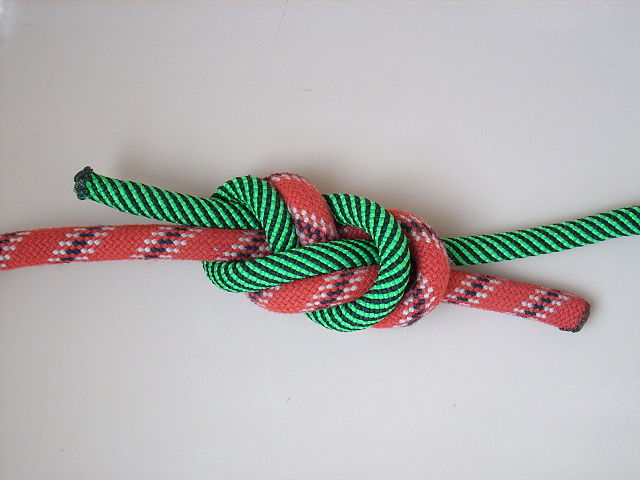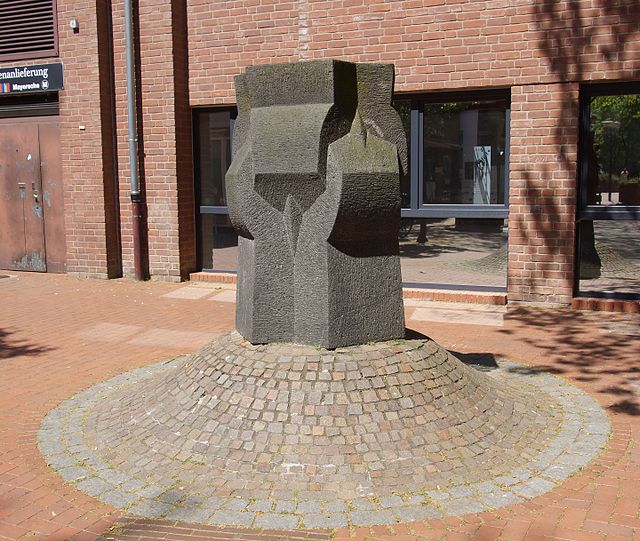A bend is a type of knot used to join two lengths of rope. Bends are used in a variety of situations, including climbing, sailing, and securing loads. They are classified based on their ability to be tightened or released, their resistance to slipping, and their strength. Some common types include the sheet bend, the double fisherman's knot, and the double figure-eight bend. Bends allow two ropes to be securely joined together, enabling the combined ropes to support weight or transmit force. It is important to choose the appropriate bend for the specific task at hand, as some may be stronger or more secure than others.
The sheet bend
Image: Blood Knot Final
Image: Alpine Butterfly Bend Final
Image: Doppelter Achtknoten gesteckt
A knot is an intentional complication in cordage which may be practical or decorative, or both. Practical knots are classified by function, including hitches, bends, loop knots, and splices: a hitch fastens a rope to another object; a bend fastens two ends of a rope to each another; a loop knot is any knot creating a loop; and splice denotes any multi-strand knot, including bends and loops. A knot may also refer, in the strictest sense, to a stopper or knob at the end of a rope to keep that end from slipping through a grommet or eye. Knots have excited interest since ancient times for their practical uses, as well as their topological intricacy, studied in the area of mathematics known as knot theory.
Knot board [es] on Elbe 1 (ship, 1965)
An example of a quipu from the Inca Empire, currently in the Larco Museum Collection.
Alexander cuts the Gordian Knot, by Jean-Simon Berthélemy (1743–1812)
Gordian Knot statue (1990)





![Knot board [es] on Elbe 1 (ship, 1965)](https://upload.wikimedia.org/wikipedia/commons/thumb/d/da/Knopar_-_2017.jpg/640px-Knopar_-_2017.jpg)


